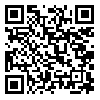year 6, Issue 2 (Semi-Annual 2022)
JIC 2022, 6(2): 81-97 |
Back to browse issues page
Download citation:
BibTeX | RIS | EndNote | Medlars | ProCite | Reference Manager | RefWorks
Send citation to:



BibTeX | RIS | EndNote | Medlars | ProCite | Reference Manager | RefWorks
Send citation to:
Goodarzparvari P, Birouti S, Bagheri Garmarudi A. Reading the iconological of the ruling visual elements in the Ilkhanid coins from a perspective the discourse of religion. JIC 2022; 6 (2) :81-97
URL: http://jih-tabriziau.ir/article-1-200-en.html
URL: http://jih-tabriziau.ir/article-1-200-en.html
1- Department of Visual Communication, Faculty of Arts, Central Tehran Branch, Islamic Azad University, Tehran, Iran , p.goodarzparvari@iauctb.ac.ir
2- Department of Art Research, Faculty of Art, Central Tehran Branch, Islamic Azad University, Tehran, Iran
3- Faculty of Basic Sciences, Imam Khomeini International University, Qazvin, Iran
2- Department of Art Research, Faculty of Art, Central Tehran Branch, Islamic Azad University, Tehran, Iran
3- Faculty of Basic Sciences, Imam Khomeini International University, Qazvin, Iran
Abstract: (3910 Views)
Ilkhani coins, from the point of view of the beauty of the motifs and variety of religious rituals, are among the best Islamic coins, which should be carefully examined from the iconological point of view in order to identify the essence of their thoughts and existential philosophy. The multiplication of visual elements placed on the coins was the discourse of religion, which was engraved on the coins in its most beautiful form, under the influence of religious beliefs, according to the diverse religious tendencies of the Ilkhanids. The aim of the research is to investigate the dominant elements of the iconographical works of Ilkhani basques during the three steps of description, analysis and interpretation to achieve the deep links between the appearance of a pictorial text and what is defined outside the text as religious conventions. The current research, which is different from the conventional methods of numismatics, seeks to answer the question that, from the iconological point of view of Ervin Panofsky, how are the visual elements ruling in the Ilkhani coins analyzed and interpreted? The hypothesis is that regardless of the aesthetic point of view, these elements imply transcendental concepts that It is in line with the various ritual beliefs and religious beliefs of Ilkhanians. The historical analytical research, based on library studies, field investigation and targeted selection of museum data, shows that the ruling elements in the patriarchal coins during the rule of the great Mughal rulers were the rider with bow and arrow, the Star of David, the Jewish candlestick and the triangle, and during the rule of Yasa, the lion and the rabbit. And in the Islamic period, lions and the sun are referred to, lion and sun, each of which is related to the philosophical concepts of shamanism, Buddhism, Judaism, Christianity, and Islam, and it has been observed that during the Yasa and Islamic rule, under the influence of religious policies such as tolerance and expediency Thinking or apolitical, the multiplication of motifs along with religious rituals has been done on the coins. The coins left from the Ilkhanid period have writings in Uyghur and Mongolian language; Phrases such as Laala ila Allah and Muhammad Rasulullah along with the titles of the Mughal Sultans in Persian script are also seen on the coins. On some Ilkhani coins, the names of the twelve Imams, especially Imam Ali appear. After the Mongol sultans turned to the Sunan religion, the coins were also influenced by this and the names of the imams and the names of the Rashidin caliphs were imprinted on them. From the point of view of iconography, motifs influenced by different religions of Mughal patriarchs (Christianity, Buddhism, Judaism, Islam), verses and hadiths related to Shia and Sunni religions, geometric decorative frames with the use of medals can be seen in the coins of the Ilkhanate period. The special religious tendencies of some Mughal patriarchs and the variety of religious rituals, along with animal and non-animal motifs on the coins of the early stages of the patriarchate rule, strengthen the hypothesis that religious beliefs were not important for the early rulers of the patriarchate and some of the practice of religious tolerance In the early days of the government, who did not have a strong world view, they followed in order to be able to live in a conquered land with a culture and civilization that they did not have the benefit of. to rule easily. The choice of divisions and their cohabitation along with some religious rituals shows the intelligence of the Mongol rulers in line with their state policy. Although in some cases, they have abandoned the policy of tolerance and have very fanatically imprinted their religious beliefs on the coins. By examining the coins of the Mughal patriarchs in the middle periods, it seems that with the spread of religious differences with the disappearance of the rule of the previous religions and the increasing spread of the religion of the ruling patriarchs, its effect on the coins was well in the form of sun, milk and sun motifs. And the lion and the process of performing religious rituals will change.
Type of Study: Original Research |
Subject:
2
Received: 2022/07/11 | Accepted: 2022/12/17 | Published: 2023/03/15
Received: 2022/07/11 | Accepted: 2022/12/17 | Published: 2023/03/15
Send email to the article author
| Rights and permissions | |
 |
This work is licensed under a Creative Commons Attribution-NonCommercial 4.0 International License. |







 tabriziau.ac.ir
tabriziau.ac.ir